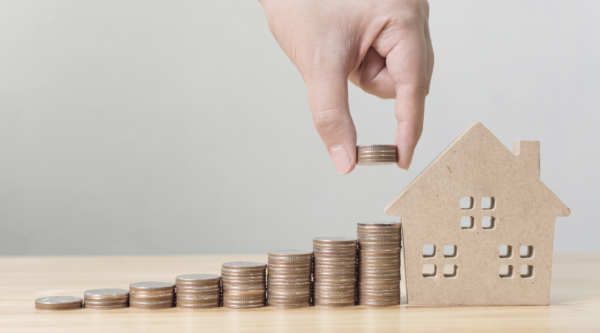UTAH HELOCs Defined
In order to properly understand a Home Equity Line of Credit it is important to first understand
a Home Equity Loan. A Home Equity Loan is simply a loan you can take out using your house
as collateral. These loans are typically fixed-rate HELOCs, allowing borrowers to have an idea of what their monthly payments will look like throughout their payment schedule. A Home Equity
Line of Credit, or HELOC, is similar to a Home Equity Loan through the idea of using your
home as collateral to borrow money. However, a HELOC is similar to a credit card in the ways
that you can draw on funds almost instantaneously. Once you draw funds, they
usually carry a variable, or floating, interest rate that changes with the market. Fortunately, these
funds have no interest rate while untapped allowing a HELOC to be a nice source of emergency
funds.
Draw Period vs. Repayment Period & Variable Rate vs. Fixed Rate
There are two phases of a HELOC: the draw period and the repayment period. The draw period commences when you receive approval for a HELOC and typically lasts about 10 years. During this phase, your loan is a line of revolving credit with a variable interest rate. You may borrow as much as you need up to your limit. An alternative to a variable rate is a fixed rate HELOC. A fixed rate may protect you from market fluctuations that affect variable rates and typically allows locking in for anywhere between 5 to 30 years. So why not choose a fixed rate? As compared to a traditional variable rate, fixed rates may have higher initial interest rates, which could incur more fees and penalties, and are typically more difficult to find in the market. Whichever rate type you choose, once the draw period is over, you begin the repayment period where access to the line of credit ceases and payments on the outstanding balance may begin. You can make payments monthly or in a lump sum. If you make payments over time, the repayment period is about 20 years.

Cash Out Refinances vs. HELOC
Getting a HELOC isn’t the only way to tap into the equity held through the ownership of your home. You can also take out a loan using cash-out refinancing. This process includes taking out a new loan that replaces your original mortgage. If your new loan is bigger than the balance on your previous loan, you can pocket some extra cash. It is important to consider interest rates when taking loans and with cash-out financing you are often looking at a reduced rate compared to your original mortgage. Homeowners use cash out refinancing in a similar fashion to HELOCs and often make improvements to their property. Homeowners even use cash-out refinancing as a way to consolidate credit card debt. In certain interest rate conditions, it may even make sense to refinance a HELOC!
How to Maximize Equity with FHA
Low to middle-income families use FHA loans to become a homeowner easier with lower monthly payments, lower down payments, or both. Over time, the value of the home appreciates and the homeowner builds equity in their home. The HELOC allows them to access a portion of this equity and spend it on whatever they please. This typically results in home improvement projects, investments, starting a business, or emergency situations. This allows for more financial flexibility for households with generally lower annual income. If you are considering home improvement projects, an FHA 203(k) loan is a suitable option, and you will collaborate with a lender to obtain approval. Make sure you have conducted thorough research into HELOC rates and FHA 203(k) rates to ensure you are not falling victim to large interest payments. You will need to strategize your spending with both HELOC and FHA 203(k) to ensure a positive return on investment when the project is complete. Pay down the HELOC balance and mortgage principal to increase your home’s equity even more!

When is the Right Time to Refinance with your HELOC?
Similar to refinancing your home, finding the right time to refinance with a HELOC is dependent on your current finances. For example, using a HELOC may be a good idea if you need to borrow large sums of money regularly or borrow equity. It could also be the best option for some people’s budget to refinance with a HELOC. Even if it costs more in the long run, it can help those who have neared the end of their draw period but cannot afford to start repaying the principal as scheduled. Refinancing can help you reduce your monthly mortgage payments and free up money to cover other expenses. It can also help you access additional cash if you need it. Finding the best bank to receive a HELOC, comparing interest rates, repayment terms, and the best no fees HELOC is also important.
HELOC in Summary
In short, a Home Equity Line of Credit, or HELOC, is a line of revolving credit derived from your home equity value. Although this loan most commonly has a variable interest rate, it is possible to secure a fixed interest rate. HELOCs are commonly used for large expenses, such as home improvement projects. Take some time to define your situation and needs. This will help you determine if a HELOC is right for you and if not, what alternatives may better suit your needs. Don’t feel frustrated – understanding HELOCs takes time. To learn more about these loans visit Investopedia and the Federal Trade Commission.




